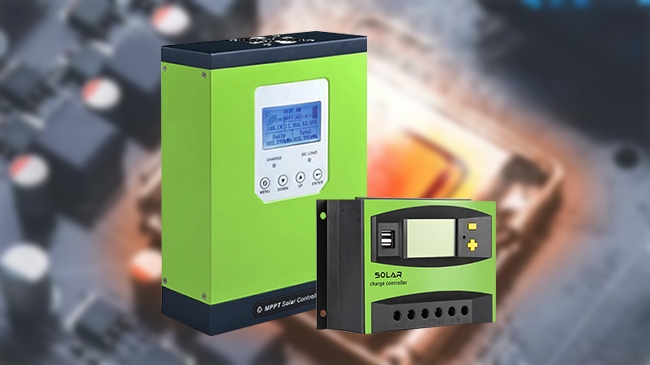Solar charge controllers play a crucial role in solar energy systems, managing the power flow between solar panels, batteries, and connected loads. Their purpose is to optimize energy use while protecting the batteries and other system components. However, overheating is a common issue faced by many users, and understanding the root causes is essential to maintaining system efficiency and prolonging the lifespan of the controller. This article explores the reasons behind solar charge controller overheating, its consequences, and preventive measures.

1. Insufficient Ventilation
One of the primary reasons for overheating is inadequate ventilation around the charge controller. Solar charge controllers generate heat as they regulate voltage and current. If installed in an enclosed space without sufficient airflow, heat can build up, causing the device to overheat. Factors contributing to poor ventilation include: Enclosed or poorly ventilated installation locations; Placement near heat sources; Lack of cooling fans or heat-dissipating mechanisms.
Solution: Ensure the controller is installed in a well-ventilated area. Use fans or heatsinks to improve air circulation and reduce temperature.
2. Oversized Solar Panels
Using solar panels with power ratings beyond the controller's capacity can overload the device, leading to overheating. Every charge controller has a specified maximum current and voltage rating. Exceeding these limits forces the controller to work harder, generating excessive heat.
Solution: Select a solar system charge controller that matches the specifications of your solar panels. For future upgrades, ensure the controller has a margin for additional capacity.
3. Continuous High Current Demand
High power demand from connected loads or batteries can push the controller to its limits. When batteries are deeply discharged or large loads are connected, the controller operates at high currents for extended periods, increasing its temperature.
Solution: Balance the system by using appropriately sized batteries and loads. Consider using a controller with higher current ratings to accommodate occasional high demands.
4. Ambient Temperature
High ambient temperatures can exacerbate the overheating issue. Solar power charge controllers rely on the surrounding environment to dissipate heat. When installed in hot climates or exposed to direct sunlight, the efficiency of heat dissipation decreases, leading to thermal stress.
Solution: Install the controller in a shaded, cool location. Using a weatherproof enclosure with proper ventilation can protect the device from direct sunlight while ensuring heat dissipation.
5. Faulty or Undersized Wiring
Improper wiring can cause overheating in the charge controller. Factors include: Undersized wires that cannot handle the current, leading to resistance and heat; Loose or corroded connections that increase resistance; Faulty wiring causing short circuits.
Solution: Use appropriately sized and high-quality wires as recommended by the manufacturer. Regularly inspect and maintain connections to prevent resistance buildup.
6. Defective Components
Internal faults, such as malfunctioning components or damaged circuits, can cause a solar power controller to overheat. Manufacturing defects or wear and tear over time may lead to inefficiencies in energy regulation, increasing heat generation.
Solution: Periodically inspect and test the controller. If overheating persists despite optimal conditions, consult the manufacturer or replace the device.
7. Improper Settings
Incorrect configuration of the solar charge controller can lead to overheating. For instance, setting the charging parameters too high for the battery type may cause the controller to overwork.
Solution: Follow the manufacturer's guidelines when configuring the charge controller. Ensure that charging settings match the battery's specifications.
8. Dust and Debris Accumulation
Dust, dirt, and debris can accumulate on the charge controller over time, insulating it and trapping heat. This problem is more common in outdoor installations or dusty environments.
Solution: Regularly clean the charge controller's surface and surrounding area to ensure optimal heat dissipation. Using a protective enclosure can reduce exposure to dust.
Consequences of Overheating
Overheating can have serious implications for the performance and longevity of the solar charge controller, as well as the entire solar power system:
- Reduced Efficiency. Overheating can cause the controller to operate less efficiently, reducing the energy available for storage and use.
- Thermal Shutdown. Many modern controllers have built-in thermal protection and will shut down when temperatures exceed safe limits. This disrupts power flow to batteries and loads.
- Component Damage. Prolonged exposure to high temperatures can damage internal components, leading to permanent failure.
- Fire Hazard. In extreme cases, overheating can pose a fire risk, especially if flammable materials are nearby.
Preventive Measures
- Choose the Right Controller. Invest in a high-quality solar energy controller with a sufficient capacity margin for your system.
- Install Properly. Ensure the controller is installed in a cool, well-ventilated location, away from direct sunlight and heat sources.
- Monitor Performance. Regularly check the controller's temperature and performance using monitoring tools or built-in diagnostics.
- Maintain the System. Perform routine maintenance to clean dust, check wiring, and ensure all components are functioning correctly.
- Use External Cooling. For high-capacity systems, consider using external cooling solutions, such as fans or additional heatsinks.
Conclusion
Solar charge controller overheating is a common but manageable issue in solar energy systems. By understanding the causes—from insufficient ventilation to improper settings—users can take proactive steps to mitigate the risks. Regular maintenance, proper installation, and adherence to manufacturer guidelines are essential to ensuring the controller operates efficiently and reliably. A well-maintained solar power charge controller not only prevents overheating but also extends the life of the entire solar energy system, maximizing its benefits for years to come. If you want to buy or know more about solar charge controller, please look through Inverter Online Shop or contact us.
